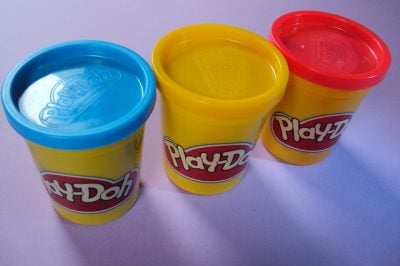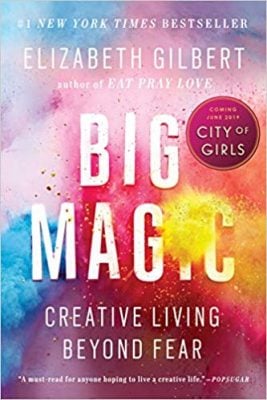

Don’t just teach outside of the box, destroy it altogether! Let’s throw away the textbooks for hands-on, engaging, creative, arts-infused lessons. Here’s how.
As educators, we’ve all heard the phrase, “think outside the box.” It is a great mantra for those who want to think about traditional teaching strategies in a new way, to dig deep into the creative process, or to push themselves to the next level in lesson delivery. This wise quote was shared with me early in my teaching career, and I have worked tirelessly, like most teachers, to constantly improve my craft and present top-notch learning to students (and teachers) using new, exciting, nontraditional, “out of the box” methods year in and year out.
One thing I have found about teaching in relation to a box though is that oftentimes I find myself longing to be back inside of it. It’s not that I don’t enjoy the lack of restrictions and as I step outside the box’s confinement, but like a siren’s call, it beckons me back. The inside of the box is…
easy
comfortable
familiar
safe
________________
I am sure you can think of other words to describe the box that you sometimes find yourself in as you teach. There are lots of reasons to stay inside.
Because of the box’s appeal, thinking outside of it oftentimes is an isolated event that happens on Friday afternoon once the weekly assessments are finished. It may occur on a special school-wide celebration day or as a holiday approaches. Sometimes it happens when an evaluator is watching or a district administrator plans a visit. Once these events pass, the box’s call grows louder and louder and woos us back to its ease, comfort, familiar, safe space.
I completely understand how strong the temptation to return is. I confess that I once wrote “rest” in my plan book for the day after a big “out of the box” lesson was completed with my class. I can only imagine the outcome had I “destroyed the box” the day before during my big lesson rather just momentarily think outside of it only to crawl back in the next day.
If we want to really take our teaching to the next level, and consistently “wow” the students with unique, hands-on, engaging learning experiences we can no longer merely think outside the box. If we want to consistently develop students’ creativity, the box cannot keep calling us back. If we want students who think independently and work collaboratively to make the future better, the box must cease to exist. We must destroy the box. Our students are counting on it.
How exactly do we do that? I am glad you asked!
 1. Start by reading The Creativity Challenge: Design, Experiment, Test, Innovate, Build, Create, Inspire, and Unleash Your Genius. Tanner Christensen’s book filled with creativity challenges has helped me to destroy the box of my thinking in countless ways. “Creativity by definition literally means to transcend traditional ideas to create meaningful new ones.”
1. Start by reading The Creativity Challenge: Design, Experiment, Test, Innovate, Build, Create, Inspire, and Unleash Your Genius. Tanner Christensen’s book filled with creativity challenges has helped me to destroy the box of my thinking in countless ways. “Creativity by definition literally means to transcend traditional ideas to create meaningful new ones.”
Destroying the box must start with this. Try some of these for yourself and then introduce a few to your students. Check out Tanner’s site for mind-blowing thoughts on the topic of creativity. www.creativesomething.net
2. Rulers are much more than a measuring tool or a straight drawing device. They have limitless possibilities. Give your students 5 minutes to create the most unique uses for a ruler other than measurement or straight lines. This will help to destroy the box of traditional thinking and invite creativity into your space.
 3. Traditional teachers will often ask a question to a group of students, only to hear a few responses. A teacher who wants to destroy the box has Play-doh on hand and asks every to sculpt their answer rather than hear from only a few. This strategy involves everyone in the answering process and increases engagement.
3. Traditional teachers will often ask a question to a group of students, only to hear a few responses. A teacher who wants to destroy the box has Play-doh on hand and asks every to sculpt their answer rather than hear from only a few. This strategy involves everyone in the answering process and increases engagement.
An example for the first week of school, “Hey students, welcome to my class. Sculpt a Play-Doh image that tells me something you want me to know about you.” Allow students to share answers with peers and leave their sculptures on the desks throughout the day. You will quickly have answers from everyone rather than a few.
 4. Take a walk outside around the school grounds. Ask students to collect twigs, leaves, grass, etc. (Safely of course.) After a short walk, stop and read passage connected to the curriculum, share a read aloud, review specific content.
4. Take a walk outside around the school grounds. Ask students to collect twigs, leaves, grass, etc. (Safely of course.) After a short walk, stop and read passage connected to the curriculum, share a read aloud, review specific content.
To finish the project have students create nature art with the items they collected (like in the image to the left) that retell the passage, read aloud, or review.
5. Grab some colored masking tape on your next trip to the store. I use this masking tape from Amazon. Find a wall in the building that needs some beauty. Have students create a collaborative piece of art about something they are learning about. Tape isn’t just for mending ripped paper and sealing things. It has countless possibilities when used in student groups. Rethinking traditional uses of materials is the best way to destroy the box!
 6. Integrate the arts into your regular curriculum. You do not have to be trained as an art teacher to bring art into your teaching. Grab some Play-doh or aluminum foil and ask your students to sculpt about what they’ve read rather than turn and talk or journal. No, those things aren’t bad, but remember, we are destroying the box of our traditional thinking. Art, even if you’re not an artist, forces us to look and think with a different perspective. Need a starting point? Read Peter H. Reynolds’s book “The Dot,” and take the teacher’s advice, “Just make a mark and see where it takes you.”
6. Integrate the arts into your regular curriculum. You do not have to be trained as an art teacher to bring art into your teaching. Grab some Play-doh or aluminum foil and ask your students to sculpt about what they’ve read rather than turn and talk or journal. No, those things aren’t bad, but remember, we are destroying the box of our traditional thinking. Art, even if you’re not an artist, forces us to look and think with a different perspective. Need a starting point? Read Peter H. Reynolds’s book “The Dot,” and take the teacher’s advice, “Just make a mark and see where it takes you.”
Also, visit Peter’s site for some more tips and tricks: PeterReynolds.com
 7. If you are serious about destroying the box, grab Big Magic: Creative Living Beyond Fear and read every word… twice. I will tell you, it’s not a teacher book. But, Elizabeth Gilbert speaks to the number one reason why we are often stuck inside the box; we are afraid. Overcoming our fear of leaving it is key. Let me know what you think after you read it!
7. If you are serious about destroying the box, grab Big Magic: Creative Living Beyond Fear and read every word… twice. I will tell you, it’s not a teacher book. But, Elizabeth Gilbert speaks to the number one reason why we are often stuck inside the box; we are afraid. Overcoming our fear of leaving it is key. Let me know what you think after you read it!
In my own educator journey, these three resources have been key components that have constantly kept my eyes from gazing back to the enticement of the inside of the box. Join me on Twitter (@mrdearybury) each week this school year for the #DestroytheBoxChallenge. Some week’s it will be on Monday, others it may be on Friday, but it could randomly be on a Tuesday. Who knows? A set day just felt too inside the box. ☺
As a member of the Ditch That Textbook Speaker’s Bureau, Jed provides many professional development opportunities for those looking to learn more about destroying the box and other innovative teaching ideas. Visit the Ditch That Textbook Speaker’s Bureau to view all of the amazing presentations he offers and for information on how you can bring Jed to your school!
For notifications of new Ditch That Textbook content and helpful links:
Interested in having Matt present at your event or school? Contact him by e-mail!
Matt is scheduled to present at the following upcoming events:
[getnoticed-event-table scope=”upcoming” max=”15″ expanding=”false”]

Session expired
Please log in again. The login page will open in a new tab. After logging in you can close it and return to this page.